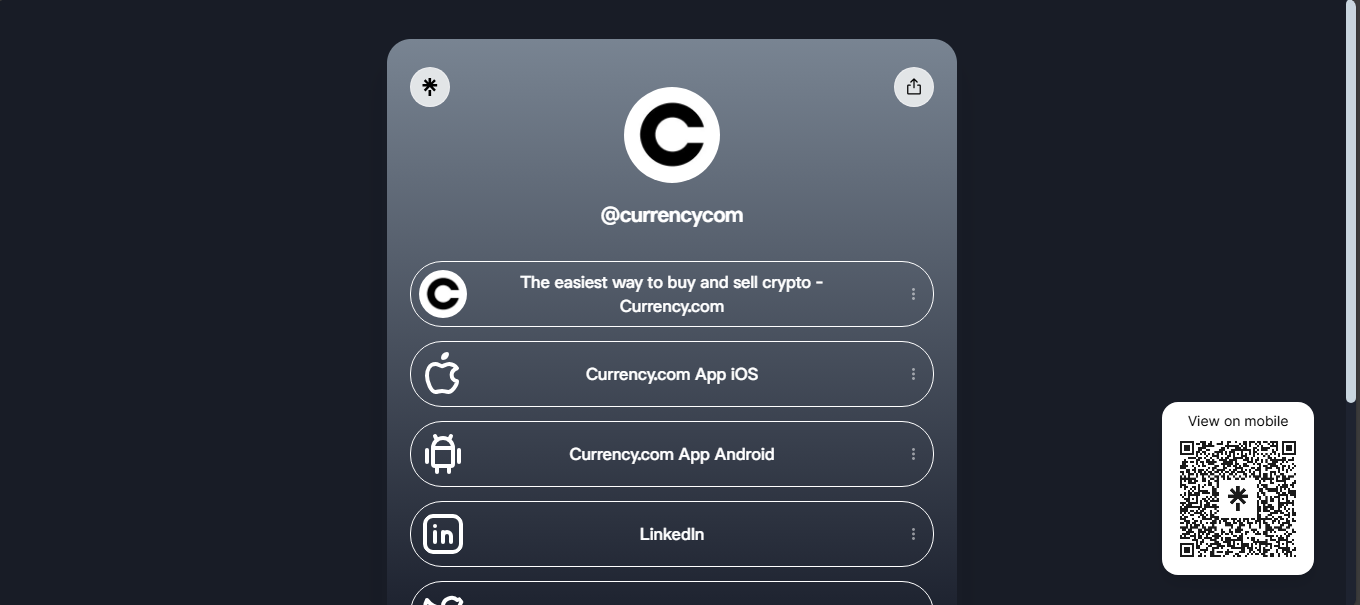ICO Rankings Blog
Discover a wealth of knowledge and stay up-to-date with the latest trends, news, and insights in the cryptocurrency and blockchain space through our blog.
Discover a wealth of knowledge and stay up-to-date with the latest trends, news, and insights in the cryptocurrency and blockchain space through our blog.
InfinityCoin Exchange appeared as a small crypto platform that promised spot trading, staking opportunities and token incentives. It tried to present itself as a budget-friendly option for casual traders.
The exchange promoted spot trading across several altcoins along with its own reward token. Users could earn incentives by providing liquidity or participating in staking. The idea was simple - a community-friendly gateway with easy access and perks.
Today InfinityCoin shows no public trading volume or active pairs. Major tracking sites list it as untracked, with zero liquidity and no visible order books. In other words, the exchange is silent - no real data shows live activity.
The ecosystem included a native token for governance and incentives. Liquidity providers were supposed to earn token rewards. In practice, tokens have zero circulation or are not listed at all. Farming and governance functions appear inactive.
There is a branded interface and wallet connection support. However, without trading activity, it feels empty. The panels work, but with no liquidity behind them, they have no real use - like a storefront with no customers.
If the platform comes back to life, it might interest small-scale DeFi users or token experimenters. It could attract those testing community rewards or niche pools.
feels abandoned. There are no trades, no liquidity and no active token mechanics. Until real usage appears, InfinityCoin remains a concept rather than a working exchange.
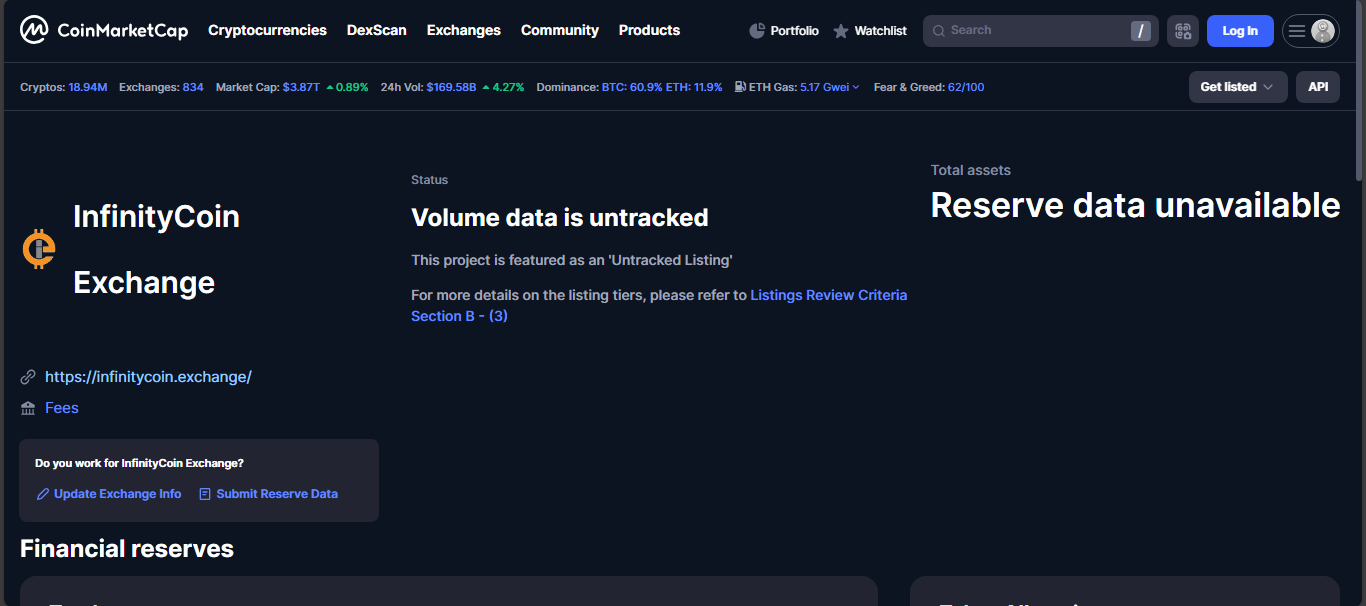
Radar Relay appeared in 2017 as one of the first wallet-to-wallet trading platforms for Ethereum tokens. Built on the 0x protocol, it allowed users to trade directly from wallets like MetaMask, Ledger or Trezor without giving up custody. Trades were settled on-chain while orders were managed off-chain.
The exchange connected traders through a shared order book that pulled liquidity from 0x and other DEX sources. There was no centralized custody - funds stayed in user wallets. Over time, the platform added limit orders, margin options and smart routing.
In its early days, Radar Relay reported over 150 million USD in trading volume across more than 175 countries. In 2018 it secured a 10 million USD funding round to boost development and expand its global presence.
Today, Radar Relay is classified as inactive. Trackers show no coins, no pairs and zero trading volume. Liquidity data is missing, and public records suggest the exchange has no active users.
Technically, the interface still exists. But without trades or liquidity, it feels like an empty shell. The order book remains online, yet there is no real market activity behind it.
If revived, Radar Relay could appeal to Ethereum users who prefer self-custody and decentralized trading with smart routing. Right now, without liquidity, it offers nothing for active traders.
Radar Relay was an important step in decentralized trading. It pioneered wallet-to-wallet swaps and non-custodial order books when the idea was still new. Today, it is effectively inactive. With no users, no trades and no updates, it remains a historical reference rather than a live exchange.
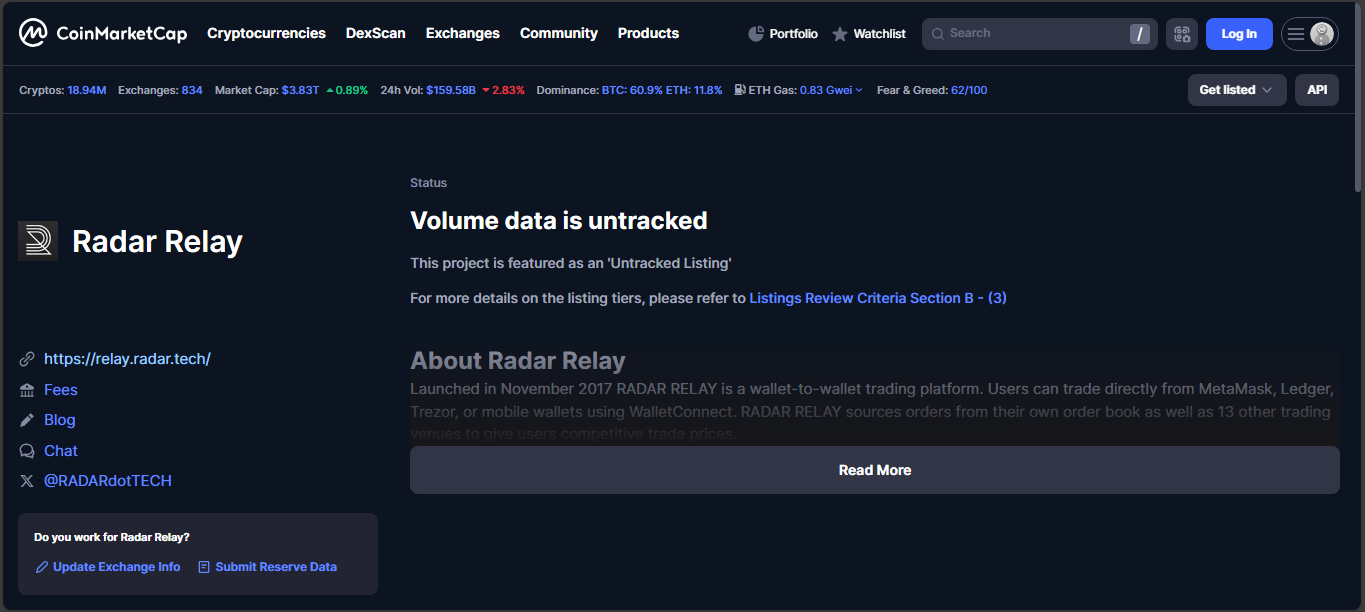
Vircurex launched in 2011. It was one of the first exchanges to support Bitcoin, Litecoin, Dogecoin and several other altcoins. In its early years the platform grew fast because it listed many niche coins and offered interest on deposits.
Vircurex positioned itself as a full-featured crypto exchange. Users could trade BTC, LTC, FTC, TRC and more. High-yield interest accounts attracted deposits, and the exchange became popular among altcoin enthusiasts worldwide.
In 2013, Vircurex suffered several hacks that drained large amounts of crypto. The team promised to cover the losses from future revenue. By early 2014, repeated wallet breaches forced the exchange to freeze withdrawals for BTC, LTC, FTC and TRC. All balances were moved to so-called Frozen Funds accounts.
The exchange announced a repayment plan. User balances were reset to zero, with gradual repayments promised from income and reserves. Management claimed this was better than shutting down. However, repayments slowed and eventually stopped by 2016.
A class-action lawsuit filed in 2018 alleged that tens of millions in user assets remained locked. Plaintiffs claimed the company never fulfilled its repayment promises and provided misleading statements. Reports mention more than 1,600 BTC and other coins still frozen.
Tracking platforms mark Vircurex as inactive. There is no trading volume, no liquidity and no functioning markets. The site now serves as a historical name rather than an active exchange.
If it had survived, Vircurex would still appeal to those trading niche altcoins or seeking interest on holdings. Today, with no activity, it exists only as a cautionary story.
Vircurex was an early pioneer in the crypto exchange space. It listed many coins and offered services ahead of its time. But hacks, poor reserve management and failed repayments led to its downfall. Now it is inactive, remembered mainly as a warning about the importance of security and transparency in crypto.
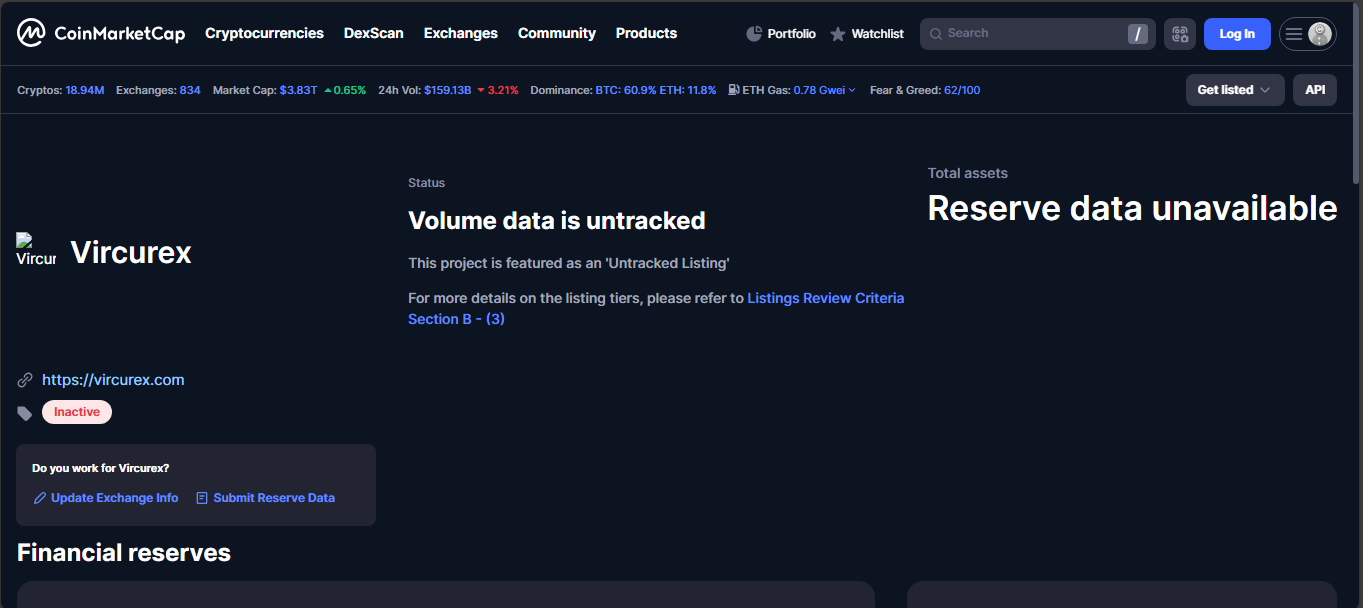
Let’sBit was created in 2020 by a team aiming to democratize crypto access across Latin America. Its vision was simple - bring crypto closer to people by building easy tools for payments, investments and lending.
The platform was designed for Latin American users. It offered spot trading, perpetual contracts and futures. Let’sBit positioned itself as a modern exchange with a clean interface and accessible tools for everyday trading.
Today Let’sBit is marked as untracked by major data sources. There are no visible asset listings, no trading volume, no liquidity numbers. All public metrics show zero activity.
The branding exists, the interface is known, but the markets are inactive. There are no trading pairs, no reserve data, and no proof of live operations. For now, the exchange feels like a shell rather than a functioning service.
If the platform relaunches, it could attract:
Let’sBit had a clear idea - make crypto accessible to a region with growing demand. But right now, that idea is not backed by activity. With no trading, no liquidity and no visible user base, the platform exists more as a concept than a working exchange. Until it shows real markets and active engagement, Let’sBit remains speculative.
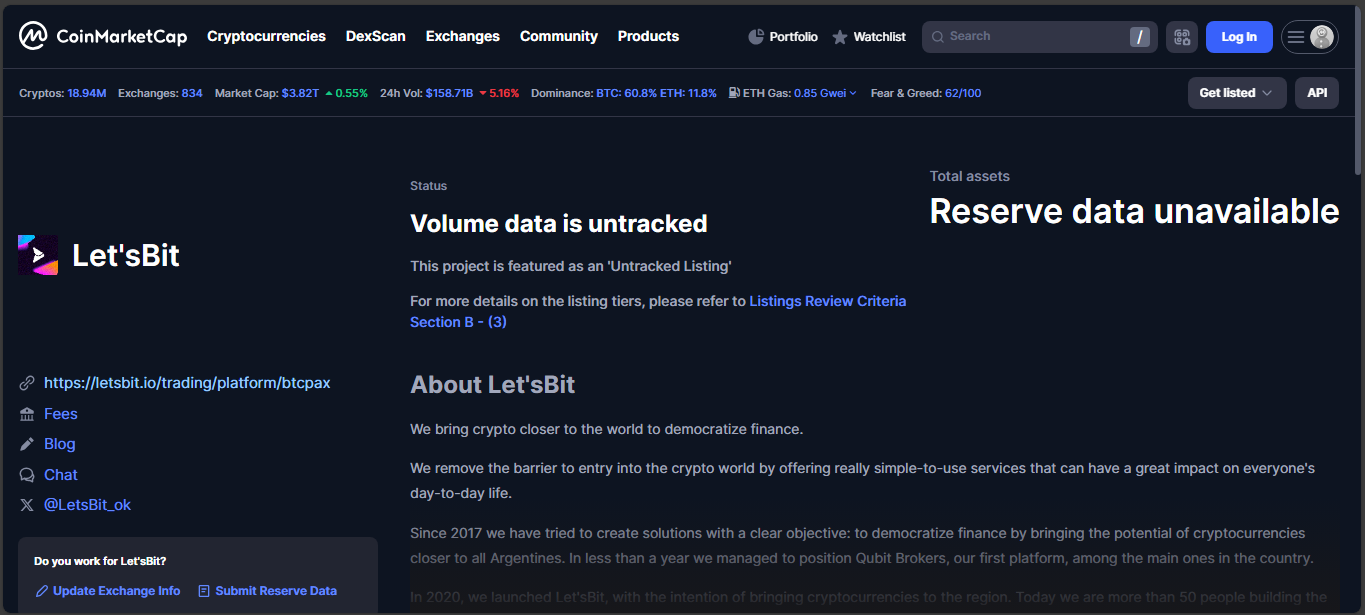
Zebitex opened in Toulouse, France, in late 2018. Built by experienced founders from the French crypto scene, it offered spot trading with euro support, SEPA deposits, card funding, and access to major coins like BTC and ETH.
The exchange targeted European users with a local, regulated service. It supported SEPA and card deposits, kept fees low, and stored more than 95 percent of crypto funds in cold storage through Ledger Vault. For its time, this was an advanced setup.
Today Zebitex is marked as inactive by major trackers. Metrics show zero listed coins, zero trading pairs, and no trading volume. The trust score also sits at zero. This suggests trading never gained traction or that public data updates have stopped.
Zebitex once claimed strong custody practices and European regulatory compliance. Security standards were mentioned, but no Proof of Reserves or open reports were ever provided. Without public trading, its reliability is hard to confirm.
Reviews paint a mixed picture. Trustpilot scores hover low, with users reporting locked funds, withdrawal issues and long delays in support responses. Some tickets reportedly went unanswered for months.
If trading resumed, Zebitex could appeal to European users wanting euro-based trading and secure custody. Right now, it offers none of this in practice.
Zebitex started with a strong idea - a regulated euro-focused exchange with solid security. But today it feels abandoned. No trading, no markets and poor transparency make it a name from the past rather than a current option. Until activity and support return, Zebitex stays a concept, not a place to trade.
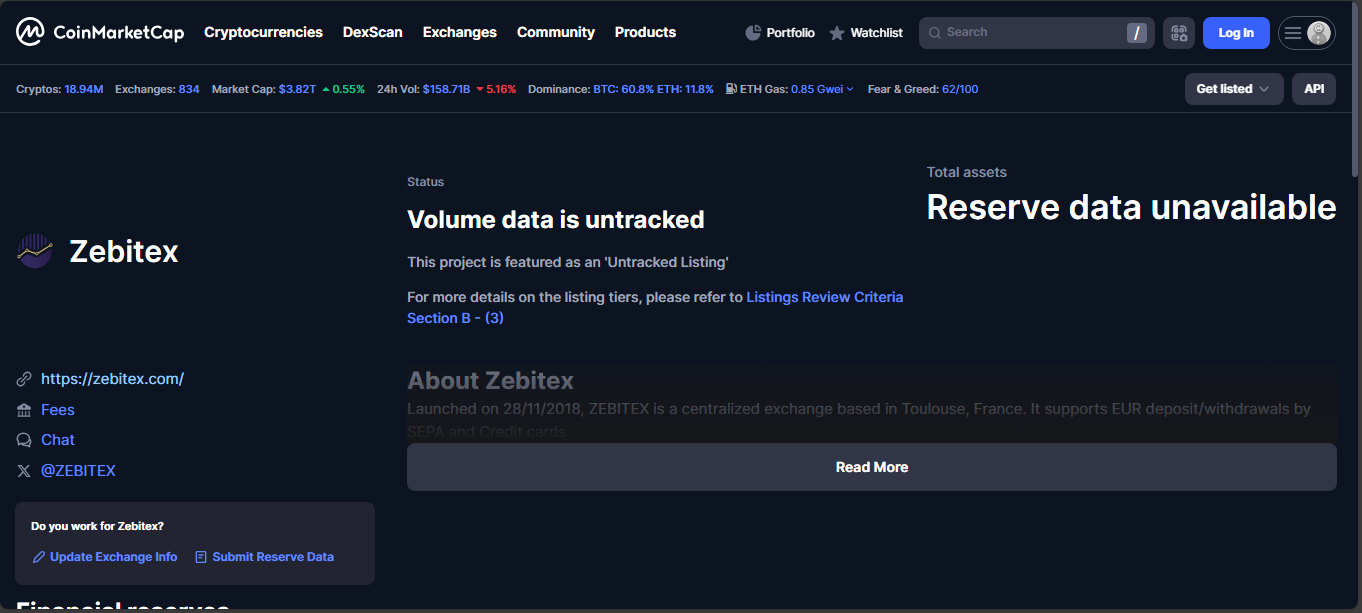
Currency.com started as a bridge between classic finance and crypto. The platform is based in Belarus and works under European rules. It allows users to trade coins, tokenized stocks and even commodities.
The idea was to give traders a single place to access crypto and real-world assets. Users can buy or sell tokens tied to stocks, gold, oil and many other markets. Fiat deposits are supported, and margin tools are part of the setup.
Volumes stay in the hundreds of millions on good days. Big crypto pairs have strong liquidity. Tokenized assets also move, but less popular markets can feel empty. Still, for major coins, trades go through without trouble.
The exchange works under European licenses. It follows KYC rules, audits its reserves and uses insured custody. Most assets stay in secure accounts. Two-factor login and strong encryption add extra layers of safety.
Currency.com looks neat. Beginners can start with a simple layout, while pros get advanced charts and tools. Orders, stops and analytics are built-in. Both the website and mobile apps run smoothly. Verification takes time, but it’s part of the compliance package.
There is a native token, CURRENCY. Holding it gives fee discounts and access to some special programs. There are loyalty levels, though details about them are not always clear. High-volume traders get better deals.
The platform is best for traders who want safety and legal clarity. It suits those who trade both crypto and real-world asset tokens. Less appealing for users seeking a fully decentralized setup.
Currency.com mixes classic finance with crypto in a regulated way. It’s secure, has deep markets for top assets and offers a smooth user experience. The downside is slower onboarding and fewer community features. For anyone who values compliance and access to tokenized assets, it’s a reliable pick.
Avascriptions looks like an undeveloped or abandoned crypto concept rather than a functioning exchange. There is no real liquidity, no user base, and no measurable activity. Even if staking exists, the lack of a visible trading venue or operational infrastructure makes it highly speculative and risky at best.
Avoid engaging with Avascriptions until tangible marketplace activity, verified audits, and user experience evidence appear.
